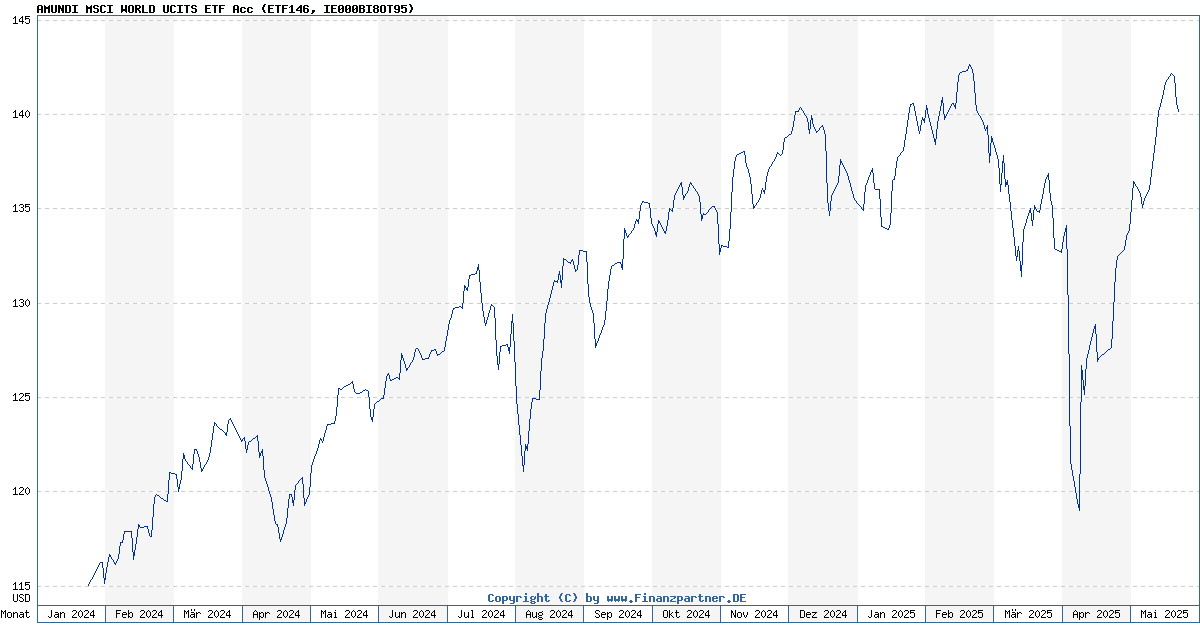How Canada And Mexico Can Thrive Despite US Tariffs: A Trade Growth Strategy

Table of Contents
Diversifying Trade Partnerships
The over-reliance on the US market has historically been a vulnerability for both Canada and Mexico. Diversifying trade partnerships is paramount to mitigating the impact of future US tariff changes and fostering long-term economic stability. This involves actively pursuing new trade agreements and strengthening existing regional alliances.
Exploring New Trade Agreements
Negotiating new bilateral trade agreements is crucial for accessing new markets and reducing dependence on the US. This requires a proactive approach to international diplomacy and strategic trade negotiations.
- Negotiating new bilateral trade agreements with Asian nations: Agreements with rapidly growing economies like Japan and South Korea offer access to massive consumer markets and opportunities for export diversification.
- Exploring opportunities within the EU and Latin American markets: The European Union represents a large and sophisticated market, while closer collaboration within Latin America can foster regional economic integration and create new trade corridors.
- Strengthening ties with emerging economies in Africa: Africa’s growing middle class presents a significant opportunity for Canadian and Mexican businesses to establish new markets and supply chains.
Diversification offers numerous benefits, including:
- Reduced reliance on a single market: This significantly mitigates the risk associated with unpredictable tariff changes or geopolitical instability in one specific region.
- Access to new consumer bases: Expanding into new markets opens up opportunities to reach a wider range of consumers and increase export revenue.
- Increased economic stability: A diversified trade portfolio provides a buffer against economic shocks and enhances overall resilience. Countries like South Korea, which successfully diversified its exports after the 1997 Asian financial crisis, serve as prime examples.
Strengthening Regional Trade Alliances
Deepening existing regional partnerships offers immediate opportunities to mitigate the impact of US tariffs. Focusing on regional value chains and streamlining trade processes within these alliances is critical.
- Deepening economic integration within the USMCA framework: While the USMCA (the successor to NAFTA) has its limitations concerning US tariffs, maximizing its potential for regional trade and cooperation remains crucial.
- Exploring opportunities for enhanced cooperation with other Latin American nations: Strengthening trade relationships with countries like Brazil, Colombia, and Chile can create regional synergies and reduce reliance on North American markets.
- Focusing on regional value chains: By creating integrated regional production networks, Canada and Mexico can enhance efficiency, reduce costs, and create more resilient supply chains.
Regional integration can effectively lessen the negative effects of US tariffs by:
- Creating alternative markets within the region: This reduces dependence on a single, potentially volatile market.
- Streamlining trade processes and reducing bureaucratic hurdles: This improves efficiency and competitiveness.
- Facilitating joint investments in infrastructure and technology: This enhances the region’s overall competitiveness and attractiveness to foreign investment.
Investing in Domestic Industries and Innovation
To thrive despite US tariffs, Canada and Mexico must invest heavily in domestic industries and innovation, boosting competitiveness and creating new export opportunities. This involves both technological advancement and a focus on higher-value products and services.
Promoting Technological Advancement
Investing in research and development (R&D) is crucial for long-term competitiveness. This also includes fostering innovation hubs and encouraging the adoption of advanced technologies across key sectors.
- Investing in research and development (R&D): Increased government funding for R&D is necessary to drive technological breakthroughs and create innovative products and services.
- Fostering innovation hubs: Creating environments that attract entrepreneurs, researchers, and investors is vital for fostering a culture of innovation.
- Supporting the adoption of advanced technologies in key sectors: Governments should provide incentives and support for businesses to adopt automation, artificial intelligence, and other advanced technologies.
Technological advancement plays a critical role in:
- Enhancing productivity: Technological improvements lead to greater efficiency and output.
- Improving competitiveness: Innovative technologies give businesses a competitive edge in global markets.
- Creating new export opportunities: Technological advancements can lead to the development of entirely new products and services for export.
Developing Value-Added Products and Services
Shifting away from reliance on commodity exports towards higher-value products and services is essential for improving profit margins and economic resilience.
- Supporting the growth of high-value manufacturing: Investing in advanced manufacturing techniques and skilled labor is crucial for producing high-value goods.
- Investing in skilled labor: Education and training programs are necessary to equip the workforce with the skills needed for high-value industries.
- Promoting the development of specialized services: Nurturing sectors like technology services, financial services, and tourism can diversify the economy and attract higher profit margins.
Focusing on value-added products and services:
- Reduces reliance on commodity exports: This mitigates the risk associated with fluctuating commodity prices.
- Attracts higher profit margins: High-value products and services generate greater revenue and strengthen economic resilience.
- Creates higher-paying jobs: These industries often require a more skilled workforce, leading to higher wages and improved living standards.
Enhancing Trade Infrastructure and Logistics
Efficient infrastructure is critical for reducing trade costs and enhancing competitiveness. This includes modernizing ports and transportation networks, as well as promoting digital trade.
Modernizing Ports and Transportation Networks
Investing in modern and efficient infrastructure is essential for streamlining the movement of goods.
- Investing in efficient port infrastructure: Modernizing ports, expanding capacity, and improving efficiency are vital for reducing transportation costs and delays.
- Upgrading transportation networks (roads, railways): Investing in well-maintained roads and railways is crucial for efficient transportation of goods across the country.
- Streamlining customs procedures: Reducing bureaucratic hurdles and simplifying customs processes can significantly improve the speed and efficiency of trade.
Efficient infrastructure:
- Reduces transportation costs: This improves the competitiveness of exports.
- Improves logistics: Streamlined processes reduce delays and enhance efficiency.
- Enhances the competitiveness of exports: Lower transportation costs make exports more competitive in global markets.
Promoting Digital Trade and E-commerce
Leveraging digital technologies can significantly expand market access and reach new customers globally.
- Implementing robust digital infrastructure: Investing in high-speed internet access and digital technologies is vital for supporting digital trade.
- Supporting the growth of e-commerce platforms: Creating an environment that supports the growth of e-commerce businesses is essential for accessing global markets.
- Promoting digital skills development: Training the workforce in digital skills is crucial for participating effectively in the digital economy.
Digital trade offers opportunities to:
- Expand market access: E-commerce platforms allow businesses to reach customers globally.
- Reach new customers globally: Digital trade overcomes geographical barriers and expands market potential.
- Overcome geographical barriers: Digital platforms facilitate trade regardless of physical distance.
Conclusion
While US tariffs present considerable challenges, Canada and Mexico possess the capabilities to leverage their strengths and implement strategic trade growth strategies to not only overcome these obstacles but to achieve significant economic prosperity. By diversifying trade partnerships, investing in domestic industries and innovation, and enhancing trade infrastructure, both nations can create a more resilient and competitive economy. Embracing these strategies is essential for navigating the evolving global trade landscape and building a future where Canada and Mexico thrive, despite the impact of US tariffs. Let's work together to build a stronger, more diversified trade future for Canada and Mexico, reducing our vulnerability to US tariff fluctuations and building a more resilient and prosperous future.

Featured Posts
-
 Investing In Amundi Msci World Ex Us Ucits Etf Acc A Nav Guide
May 25, 2025
Investing In Amundi Msci World Ex Us Ucits Etf Acc A Nav Guide
May 25, 2025 -
 Analyzing The Claire Williams George Russell Dynamic In Formula 1
May 25, 2025
Analyzing The Claire Williams George Russell Dynamic In Formula 1
May 25, 2025 -
 Darwin Teen Arrested Shop Owner Stabbed During Nightcliff Robbery
May 25, 2025
Darwin Teen Arrested Shop Owner Stabbed During Nightcliff Robbery
May 25, 2025 -
 Charlene De Monaco Y Roc Agel Un Refugio En La Costa Monegasca
May 25, 2025
Charlene De Monaco Y Roc Agel Un Refugio En La Costa Monegasca
May 25, 2025 -
 Philips Announces 2025 Annual General Meeting Of Shareholders Agenda
May 25, 2025
Philips Announces 2025 Annual General Meeting Of Shareholders Agenda
May 25, 2025
Latest Posts
-
 Italian Open Alcaraz And Sabalenkas Winning Starts
May 25, 2025
Italian Open Alcaraz And Sabalenkas Winning Starts
May 25, 2025 -
 Craig Mc Ilquham Hells Angels A Memorial Service
May 25, 2025
Craig Mc Ilquham Hells Angels A Memorial Service
May 25, 2025 -
 Alcaraz And Sabalenka Triumphant In Italian Open Debut
May 25, 2025
Alcaraz And Sabalenka Triumphant In Italian Open Debut
May 25, 2025 -
 Sunday Memorial Remembering Hells Angels Craig Mc Ilquham
May 25, 2025
Sunday Memorial Remembering Hells Angels Craig Mc Ilquham
May 25, 2025 -
 Hells Angels Member Craig Mc Ilquham Sunday Memorial Service
May 25, 2025
Hells Angels Member Craig Mc Ilquham Sunday Memorial Service
May 25, 2025
